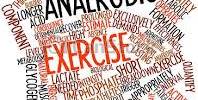It is now possible to create therapeutic therapies that mirror some of the advantages of exercising thanks to the discovery of a gene that increases muscle strength when activated by physical activity.
The University of Melbourne-led study, which was published in Cell Metabolism, demonstrated how various forms of exercise alter the molecules in our muscles and led to the identification of the novel C18ORF25 gene, which is activated by all forms of exercise and is in charge of enhancing muscle strength.
The World Health Organization (WHO) defines physical activity as any skeletal muscle-produced motion that necessitates the use of energy. All movement, whether done for recreation, transportation to go to and from locations, or as part of a person’s job, is considered physical exercise. Both vigorous and moderate physical activity are beneficial to health.
Animals lacking C18ORF25 perform poorly during physical activity and have weaker muscles. According to the project’s director, Dr. Benjamin Parker, the C18ORF25 gene could make muscles significantly stronger without necessarily making them bigger.
“Identifying this gene may impact how we manage healthy aging, diseases of muscle atrophy, sports science and even livestock and meat production. This is because promoting optimal muscle function is one of the best predictors of overall health,” Dr. Parker said.
“We know exercise can prevent and treat chronic diseases including diabetes, cardiovascular disease and many cancers. Now, we hope that by better understanding how different types of exercise elicits these health promoting effects at the molecular level, the field can work towards making new and improved treatment options available.”
To identify how genes and proteins are activated during and after different exercises, we performed an analysis of human skeletal muscle from a cross-over intervention of endurance, sprint and resistance exercise.
Dr. Benjamin Parker
It has been demonstrated that regular exercise helps control and prevent noncommunicable diseases like diabetes, heart disease, stroke, and a number of malignancies. Additionally, it lowers blood pressure, supports a healthy body weight, and enhances mental health, wellbeing, and quality of life.
By examining proteins and how they change within cells, the team, which included Dr. Parker and Professors Erik Richter and Bente Kiens of the University of Copenhagen in Denmark, was able to distinguish the molecular similarities and differences between various forms of exercise in human muscle biopsies.
“To identify how genes and proteins are activated during and after different exercises, we performed an analysis of human skeletal muscle from a cross-over intervention of endurance, sprint and resistance exercise,” Dr. Parker said.
Researchers were able to compare the signaling responses to the various exercise modalities in the same person relative to their pre-exercise level because to the experimental design. This allowed them to observe how a person responded to various forms of exercise right in their muscles.
The finding of the novel gene was made possible, crucially, by the study team’s ability to recognize genes and proteins that consistently change across all individuals and all forms of exercise.
This work was funded by the Australian National Health and Medical Research Council project grant (APP1122376), a Diabetes Australia grant, a University of Melbourne Driving Research Momentum Grant, and a NHMRC Emerging Leader Investigator Grant (APP2009642) to Dr Benjamin Parker.
















